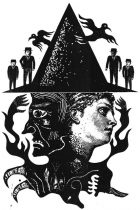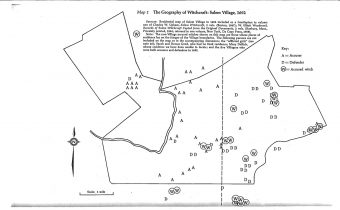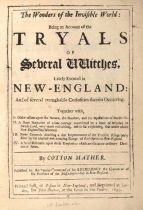
By the late sixteenth century, Holland had mostly outgrown the sensationalism and accusations of witchcraft. With the Dutch settlement of New Netherland (now New York), the immigrants brought this sense of skepticism, resulting in only a few cases of witchcraft in this area compared to the several in other parts of the colonies. Cotton Mather’s The Wonders of the Invisible World, published in 1693, provides accounts of several witch trials of Salem, Massachusetts. Two such accounts are that of Bridget Bishop and Martha Carrier in 1692. Based on the testimony of several neighbors, Bishop was convicted of lying under oath and executed one week after her trial; Carrier was also found guilty and executed 17 days following her conviction, but these two trials reflect a larger trend in Salem. Looking at the map, there were 22 tried and convicted witches in the village in the year 1692, compared to just three trials in New York between 1657 and 1670, all of which concluded in not guilty verdicts.

In October of 1665, Ralph Hall and his wife Mary were tried for witchcraft in New York, where Ralph was accused of practicing witchcraft on both George Wood and the child of Ann Rogers, both of whom subsequently fell ill and died. After pleading not guilty, the jury resolved that there was not sufficient evidence to convict either of the accused. Both Ralph and Mary were acquitted of the charges and released.
Years later, Katherine Harrison was tried and found guilty of witchcraft by a Connecticut jury, but the verdict (along with her death sentence) was overturned by the court on the recommendation that she move out of town. She relocated from Westerfield, Connecticut to Westchester, New York, where several of her neighbors filed complaints against her. However, finding no evidence to support any of the claims, she was not tried. Harrison marks a turning point in history, as no further executions for witchcraft would occur in Connecticut after her trial. The case would serve as precedent for declaring spectral evidence inadmissible.
In 1657, Goody Garlick was accused of witchcraft on Long Island. Several complaints of mysterious circumstances were filed against herbased on spectral evidence, including one that claimed she broke the leg of an ox by looking at it and another that accused her of distributing milk that caused a child to fall ill. Without sufficient evidence, Garlick was acquitted of her charges and released.

The difference in numbers between New York and Salem is stark, and the difference in language in the accounts of these trials is reflective of conflicting attitudes between colonies on this issue. The details offered in Mather’s retellings are much more sensationalized compared to the available court records of cases in New York. He provides intricate detail of each neighbor’s testimony and shows clear bias in his “Author’s Defence,” while the New York accounts remain general and straightforward. This difference suggests that while some areas of the New World remained fearful of and offended by witchcraft, the Dutch settlers of New Netherland remained skeptical of such accusations, dismissing spectral evidence as insufficient.
Helpful Links:
Cotton Mather’s The Wonders of the Invisible World